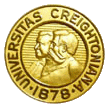|
|

Front
Page
Top
Issues
Legal Opinion
Law
Books
ALR
Search
Viewer
E-mail
Advertise
Masthead

Supreme
Court
State Courts
Cyber Law
Intellectual Property
Scales of Justice
Education Law
Human Rights
Ethics Practice
Real Estate Law
Criminal Law
Law School
Social Policy

Bulldog
News
California Star
Clovis Free Press
Daily Republican
Fresno Republican
Reagan Library
SierraPortal.com
Tower District News
ValleyPress.com
WebPortal.com
Yosemite News
Free Classifieds
|
|
 |
|
|
January 25, 2002
Knowledge Utility
in the 21st Century
By Phillip J. Bond
Under Secretary of Commerce for Technology
WASHINGTON D.C. -- President Bush made
education reform his number-one priority, with a deep understanding
of the social and economic benefits such reform could bring to
the Nation and to every American.
We are delighted that a bipartisan effort
brought the landmark “No Child Left Behind Act” into law.
And we are confident that its sweeping reforms will substantially
improve overall student performance, and help close the stubborn
achievement gaps that we can no longer tolerate.
Secretary Paige affirmed the Bush Administration’s
commitment to harnessing the power of new technologies for education
and the substantial support to help you create new and more productive
learning environments. Secretary Paige has reported on the present
challenges.
I’d like to look further into the future,
the emerging visions of e-learning, and where the technologies
can take us if we can think about learning in fundamentally new
ways.
We see technology as the cornerstone
for the entire economy, and the combination of technology and
education as its very bedrock.
During the past decade, our nation came
to widespread realization that technology was the driving force
in the economy, and increasingly important to most of our human
endeavors.
All around us we see the information
technology revolution in progress-in communications, business
and commerce, how we educate and train our people, and how we
manage our personal lives. As you know, there are even more dramatic
changes on the horizon.
I have been privileged to visit some
of our cutting-edge laboratories, where I have seen a glimpse
of the future. Three rapidly developing fields-advanced computing,
biotechnology, and nanotechnology will each create revolutionary
change in its own right, to which we all must adapt.
For example, intelligence will be embedded
everywhere, and everyone in any place will be interconnected.
Learning opportunities will at last be at our fingertips-or perhaps
only a thought or an eye movement away. Intelligent systems may
discern our knowledge needs from our work and play, and offer
learning opportunities to us proactively.
I may walk in and be informed that the
Chamber offers a course in biometrics. The result: an overall
acceleration of the accumulation of knowledge.
Knowledge is converging and accelerating…perhaps
exponentially. Taken together, these advances in technology and
knowledge generation will radically transform the very nature
of how we grow our economy and how we compete.
Growth, jobs, and the competitive edge
will go to those nations, those regions, those communities, those
companies, and those individuals that can most quickly and most
effectively generate, capture, manage, and apply knowledge. In
this kind of knowledge economy, people are at the heart of the
process.
I’m not here to say that homosapiens will be
overcome by robosapiens. But, as new technologies reshape our
world, people must reshape and renew their base of knowledge and
skill. What will the shift to a pervasive knowledge economy mean?
You know better than I. But I believe
it will mean premiums to those who can create, innovate, customize
and adapt, and manage and apply information. It means tighter
linkages between individual competency and earnings.
It means Nations whose workers possess
high knowledge and high skill will attract global investment,
high value-added business enterprises, and high-wage jobs. It
means nations that do not have a knowledgeable and highly skilled
workforce will be limited to low value-added enterprises and low
wage jobs.
I think the choice for our nation is
clear. Already we see the U.S. job mix moving upscale. Twenty
of the thirty occupations projected to be the fastest growing
over the next decade typically require an associate’s degree or
higher.
Of the thirty jobs projected to have
the largest declines, only one requires a post-secondary degree.
Small wonder, then, that businesses are seeking new approaches
to workforce training.
There is less time and fewer resources
available to upgrade workers’ knowledge and skills. E-learning
is increasingly attractive to businesses because it cuts down
on travel time and costs, class-time, and can be made available
to workers around the clock, at work or at home.
Ultimately, we need to marry education
and training, together with knowledge management to create a new
“knowledge utility” for all of us, which integrates learning into
all aspects of our work and our lives, making learning opportunities
as ubiquitous as electricity for everybody, from the pre-schooler
to the retiree.
Just as we are surrounded by electricity,
we’ll be surrounded by knowledge and learning. In the future,
we will achieve pervasive computing.
But this is a step or two past that-to
pervasive learning. Already, the “learning any place, any time”
way of thinking is beginning to foster change in the adult education
and worker training arena. Our coming challenge is to use technology
to foster change throughout the entire continuum of learning,
both formal and informal.
This is beyond getting computers into
the schools, beyond getting the schools hooked up to the Internet,
and beyond today’s debate about deployment of entry-level broadband.
This is about much bigger change-a new
learning infrastructure. What will it take? I have six suggestions.
First, we need advanced technology, applications,
and an R&D agenda focused on creating the components of that knowledge
utility I talked about: new hardware, new software, new cognitive
research, new imaging technologies, new assessment methods, new
ways to deliver education to individuals rather than the masses,
and more.
Information technology made mass customization
possible in manufacturing. Now we need to apply that mass customization
concept to education.
The private sector will play a leading
role in developing these innovations; it has the tools and capabilities.
But neither the private sector, nor the education community, can
realize this vision alone.
Each will be both user and provider in
new systems of learning, so there needs to be a partnership.
Second, we need technical standards to
help guide the development of content that will be drawn from
countless sources throughout the world. Instead of creating one
size fits all curricula, we want the ability to store, re-use,
and reconfigure slices of knowledge to create personalized learning
content with assessments of learner progress built right in.
These approaches should be adaptive,
meaning that they will recognize what you already know, and present
only what you haven’t learned yet. They should also be intuitive,
recognizing an unstated need or potential interest, then leading
the learner to areas for further exploration. That means standards
for compatibility and interoperability, accuracy and quality.
Third, we need new ways to value and
validate what people have learned.
For example, the Commerce Department
just completed an inquiry in which we asked more than 200 information
technology workers about their education and training.
What was striking to me was the amount of time
these workers devote to keeping their skills up-to-date, informally,
on their own time, 10 to 15 hours per week and on their own dime.
If we validate that learning, it will
have clear value. The time investments will have a more certain
return. We need new systems of assessment, coupled with new forms
of certification and credentialing tied to personalized learning.
These systems should be based on competency-what
people know and are able to do, rather than measuring how long
someone spent in the classroom or what courses they completed.
We are beginning to see some movement in this direction.
For example, Brainbench
offers 350 low-cost tests ($19.95) and will give you a certification
if you pass. Certifications cover fields such as information
technology, basic math and English, finance
and accounting, health care, languages
and communication, management, office skills, and
much, much more.
Competency based approaches could be
a great equalizing force, and underpin a system of true merit,
opening more doors for more people, color-blind, gender
blind.
The system wouldn’t necessarily know
where you learned what it is certifying. It would not care whether
you learned it at Harvard, an inner-city high school, on the job,
or at home. It cares only that you have the knowledge, the competency.
Fourth, we need to add to our list of
basic skills. Of course, we still need the basics of reading,
writing, arithmetic, and computing. For the knowledge economy,
we need technology literacy, inventive thinking, communication,
and collaborative problem solving, the ability for self directed,
learning how to locate information, assess it for pertinence and
accuracy, analyze it, synthesize it, and apply it to the job at
hand.
Fifth, teachers will assume new roles
and must get new training. In addition to being providers of knowledge,
they must become knowledge guides, content managers and creators.
The powerful technologies that are coming
could enable teachers to develop learning programs that meet all
students’ needs, and help all students truly reach their individual
potential. And the truly great, innovative teachers could reach
more students. Great teachers may be the rock stars of the knowledge
economy.
The future could offer universal, accessible
systems that allow learners to document their knowledge and skills,
and provide that information to the college, the employer, the
online course, and the teacher.
What I have described is no doubt a tall order.
But I am confident it would be worth the effort. In fact, studies
have reported that advanced distributed learning can cut the cost
of instruction in half, reduce instruction time by a third, and
increase instruction effectiveness by a third.
Now, imagine what it would mean if we
could generate those improvements throughout our education and
training continuum. There can be improved productivity, cost savings,
new opportunities for all Americans, a good and secure job, knowing
your children are being provided for both now and for their future.
Well, all of this will take enormous leadership
from business and education leaders, communities, researchers,
and government. We are positioned to assume a leadership role.
Think big. Work together. Envision where we want to go. Shape
the technology paths. Develop system components and tap imto the
momentum for positive change that the emerging knowledge economy
is.
[Editor's
Note: The Hon. Phillip J. Bond delivered his remarks
at the National Summit on Education Technology. Major topics
addressd by other conference speakers included the following :
* Measure student achievement and technology
effectiveness in a manner that recognizes the need for students
to achieve academic skills as well as 21st Century skills such
as technology literacy, information synthesis, communication,
inquiry-based learning and problem solving;
* Improve collaboration by all parties -- federal,
state and local governments, industry, educators, researchers
and advocacy organizations on setting and achieving are search
and development agenda;
* Expand federal government incentives to promote
and enhance industry's current and ongoing development of educational
software and other electronic learning solutions for schools;
* Create a standard research roadmap that all
parties could understand and that makes research and development
practical, relevant and timely; and,
* Continue to improve broadband connectivity
with a goal of ensuring all students and schools have access to
online learning tools.]
|


|
|
 |
|
|
|
![]()
![]()
![]()






